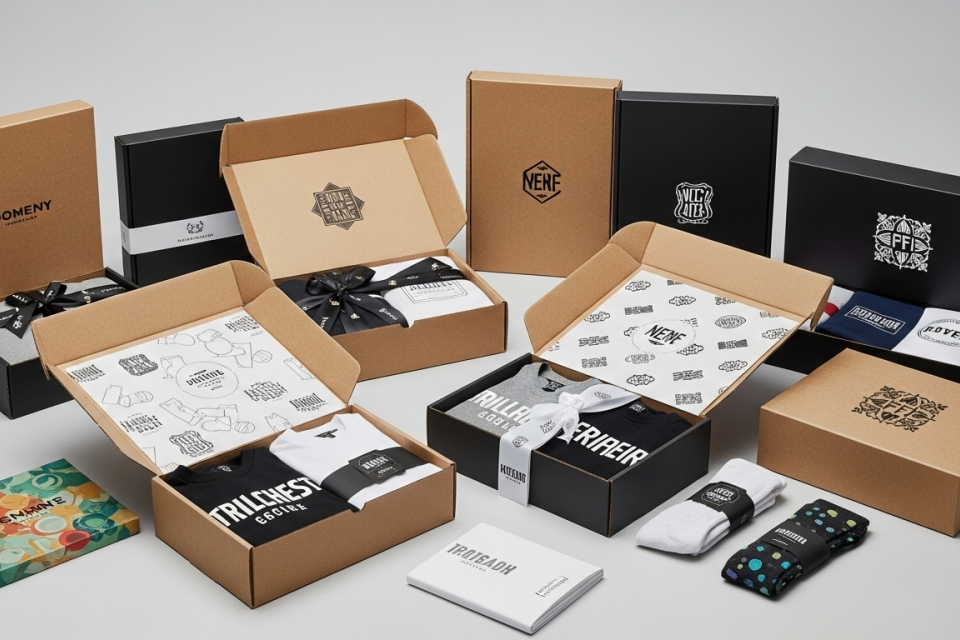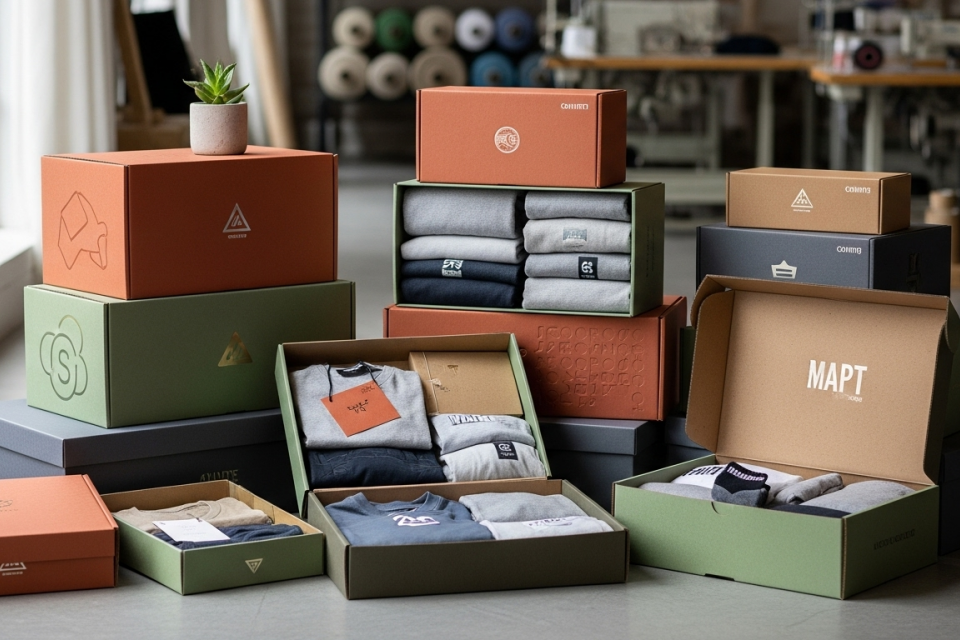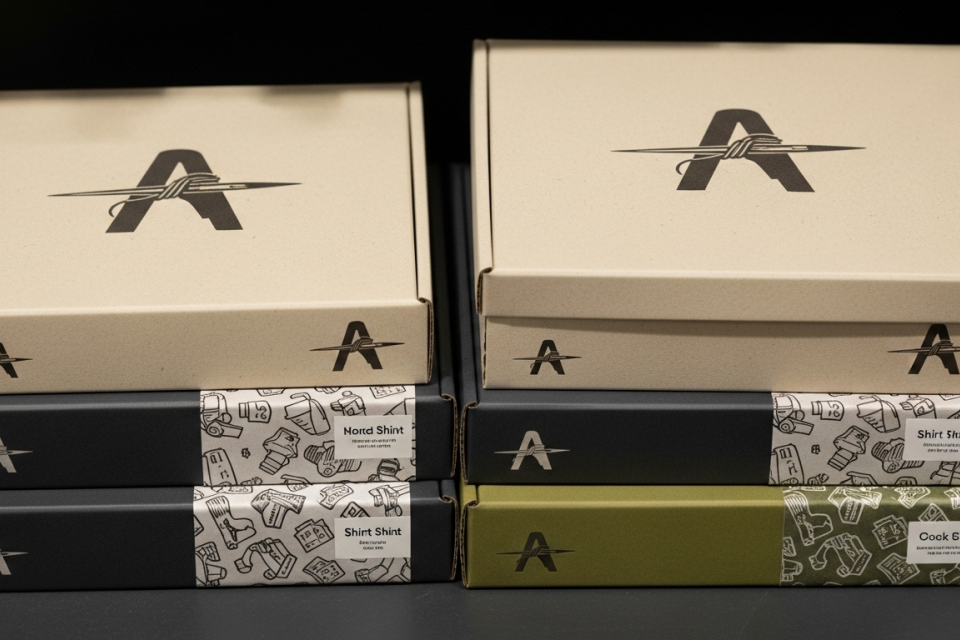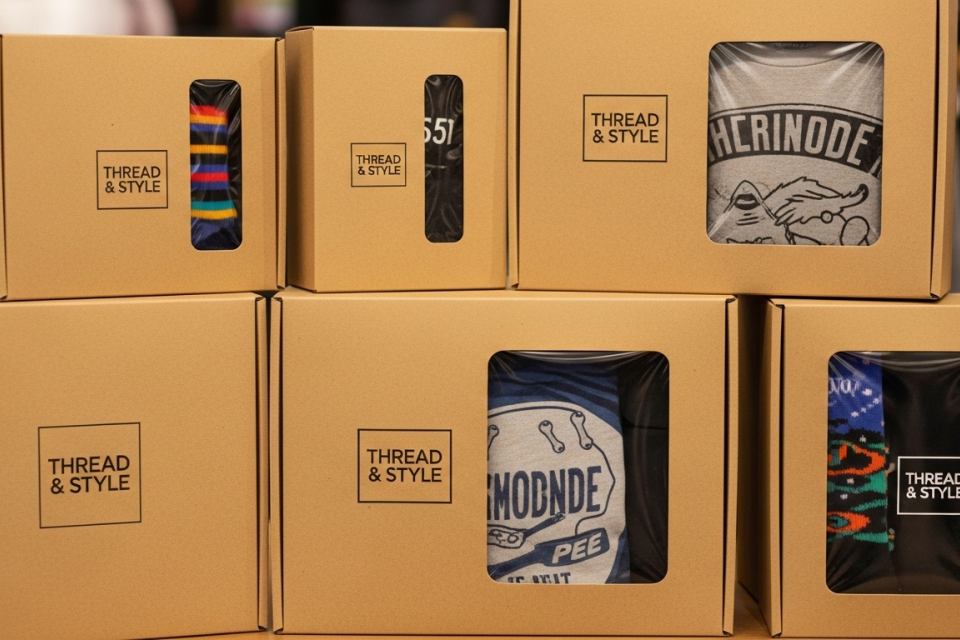Small Boutique Packaging Solutions
Unlock growth with boutique packaging. Custom and eco-friendly designs create a memorable unboxing experience that builds brand loyalty and boosts sales.
Summary
Small Boutique Packaging Solutions refers to specialized packaging services tailored primarily for small businesses and artisanal brands, aimed at enhancing product presentation and customer experience. This sector has gained prominence as an essential aspect of modern retail, allowing businesses to differentiate themselves in competitive markets through unique, customized packaging designs. Notably, small boutique packaging plays a significant role in branding, offering companies a canvas to express their identity and values while engaging customers in a memorable way.
The rise of eco-conscious consumerism has further propelled the demand for boutique packaging solutions, as businesses increasingly seek sustainable options that minimize environmental impact. Many small packaging providers now focus on eco-friendly materials, such as biodegradable and recyclable alternatives, to align with consumer preferences and regulatory demands. This shift has prompted an industry-wide trend toward sustainability, which presents both opportunities and challenges for small businesses navigating cost and supply chain limitations.
Technological advancements are also shaping the boutique packaging landscape. Innovations such as smart packaging and interactive features, including QR codes and augmented reality, enhance consumer engagement and allow brands to communicate their narratives effectively. These technologies help create immersive unboxing experiences that can drive customer loyalty and encourage social media sharing, further amplifying brand visibility.
Despite its benefits, the small boutique packaging sector faces challenges such as intense market competition, fluctuating consumer preferences, and the complexities of regulatory compliance. As small businesses strive to balance innovation with sustainability, they must navigate these hurdles to leverage boutique packaging as a strategic advantage in an ever-evolving retail environment.
Table of Contents
History
Early Packaging Practices
The evolution of packaging can be traced back to ancient civilizations, where natural materials were used extensively to protect and transport goods. Early packaging solutions included clay pots in ancient Egypt, woven baskets for carrying produce in medieval markets, and wooden crates and barrels that became standard shipping containers from the 16th to 19th centuries. These biodegradable materials served the dual purpose of containment and preservation, illustrating the importance of packaging in early commerce.
Modern Developments
The advent of synthetic materials in the 20th century marked a significant transformation in packaging practices. Companies began to experiment with innovative packaging solutions, leading to the widespread use of plastics and other synthetic materials. This shift enabled brands to offer lightweight and durable packaging options, but it also raised environmental concerns due to the proliferation of single-use plastics.
In recent years, there has been a growing awareness of sustainability, prompting many companies to revisit their packaging strategies. Pusterla 1880, a 140-year-old luxury packaging company, became the first in Europe to adopt a sustainable development strategy, emphasizing the use of recyclable and biodegradable materials in its packaging solutions. This trend reflects a broader movement in the industry towards eco-friendly packaging alternatives that minimize environmental impact while maintaining product integrity.
The Rise of Boutique Packaging
As the retail landscape evolved, small businesses began to recognize the importance of packaging in establishing brand identity and customer experience. Boutique packaging emerged as a vital element for local shops, allowing them to differentiate themselves in a competitive market. Innovations in technology further enhanced packaging solutions, enabling the incorporation of interactive features such as QR codes and augmented reality, which engage consumers on a deeper level.
Today, the packaging industry is increasingly focused on creating memorable unboxing experiences that resonate with consumers. As brands strive to connect with their customers through storytelling and unique designs, the history of packaging continues to influence contemporary practices, underscoring its critical role in commerce and branding.

Types of Packaging Solutions
Custom packaging solutions play a crucial role in enhancing the retail experience, catering to a variety of needs including shipping, takeout, and gifting. These solutions encompass a wide range of options, from traditional boxes to flexible packaging, bags, shipping supplies, and accessories designed to elevate the overall presentation and functionality of products.
Common Custom Packaging Options
There are numerous types of packaging that can be customized to suit specific products. Among the most recognized are product boxes and shipping boxes, which serve as foundational packaging solutions. However, businesses often overlook other valuable options such as corrugated displays, die cuts, trays, partitions, and inserts that can enhance product visibility and protection.
Packaging for Different Product Needs
The nature of the product significantly influences the choice of packaging. Fragile items, for instance, may require additional padding to prevent damage during transit, while food items often necessitate airtight packaging to maintain freshness. Common types of packaging utilized include cardboard boxes, padded mailers, and specialized shipping boxes tailored to protect specific goods.
Cost-Effective Packaging Solutions
For small businesses, packaging can represent a significant expense, making it essential to explore cost-effective options. Utilizing plain cardboard boxes enhanced with custom inserts or decorative tissue paper can provide an attractive solution without breaking the budget. Additionally, choosing padded mailers over traditional shipping boxes can reduce costs and minimize the amount of packing material needed.
Eco-Friendly Packaging Trends
In response to growing consumer demand for sustainability, eco-friendly packaging solutions are gaining traction among small businesses. These solutions incorporate recyclable, biodegradable, or compostable materials aimed at reducing environmental impact. Examples include compostable mailers, bulk shipping options, and the use of sustainable materials that can be repurposed after use. Implementing such practices not only appeals to environmentally conscious consumers but also positions brands as responsible players in a competitive marketplace.
Principles of Eco-Friendly Packaging
Key principles guiding the development of eco-friendly packaging include biodegradability, resource efficiency, and the use of non-toxic materials. These aspects ensure that packaging not only serves its protective role but also contributes positively to environmental sustainability. For example, biodegradable materials break down naturally, while resource-efficient production methods aim to minimize energy consumption and emissions. Brands that embrace these principles not only enhance their market appeal but also align with regulatory requirements and consumer expectations.

Benefits of Small Boutique Packaging
Custom packaging offers numerous advantages for small boutiques, enhancing both customer experience and brand visibility.
Improved Customer Experience
One of the most significant benefits of custom packaging is its ability to improve the overall customer experience. Well-designed packaging allows customers to easily access their products, creating a sense of satisfaction and excitement upon unboxing. Aesthetically pleasing packaging can also evoke positive emotions, leading to a more memorable interaction with the product. Customers tend to respond better to unique and visually appealing packaging compared to standard options, which can significantly impact their perception of the brand.
Branding Benefits
Custom packaging serves as a powerful branding tool, allowing small businesses to create a distinct visual identity. Unique designs, color schemes, and typography can help a brand stand out on store shelves, especially in competitive markets. For instance, companies like Godiva and Lindt utilize boutique packaging to convey a sense of luxury and exclusivity, fostering customer loyalty through consistent branding. Additionally, using sustainable materials in packaging reflects a brand’s commitment to ethical practices, appealing to environmentally conscious consumers and enhancing brand image.
Increased Sales
Effective packaging can directly contribute to increased sales. By creating an emotional connection through engaging designs, customers are more likely to make purchases and develop long-term relationships with the brand. In specialty stores, where consumers are often exploring various options, eye-catching packaging can be the deciding factor that leads to a sale. Furthermore, a positive unboxing experience can encourage customers to share their experiences on social media, providing additional visibility and marketing for the brand.
Cost-Effective Innovation
While custom packaging may appear to involve higher initial costs, it can lead to long-term savings through enhanced efficiency and innovation. Well-thought-out packaging solutions can streamline the fulfillment process, ultimately saving time and resources for small businesses. Moreover, investing in premium packaging materials can convey quality and value, reinforcing the brand’s market position.

Challenges Faced by Small Boutique Packaging Providers
Small boutique packaging providers encounter a variety of challenges that can impede their growth and operational efficiency. These challenges are particularly pronounced in the context of evolving consumer preferences, regulatory compliance, and market competition.
Regulatory Compliance
Navigating the complex regulatory landscape is another hurdle for boutique packaging providers. Different regions have varying regulations regarding what qualifies as sustainable packaging, and non-compliance can result in fines or legal challenges. Additionally, the certification processes for biodegradable or compostable packaging can be lengthy and expensive, creating further obstacles for small businesses trying to align with eco-friendly standards.
Supply Chain Limitations
One significant challenge is the limited supply chain infrastructure available to support eco-friendly packaging solutions. Many small businesses struggle with logistical hurdles, including inadequate access to sustainable materials and recycling facilities. This can lead to higher costs and difficulties in sourcing the necessary materials to meet consumer demand for environmentally friendly options.
Cost Management
Cost management is a critical issue for small boutique packaging providers, especially when attempting to implement sustainable practices. While eco-friendly packaging can enhance brand perception and attract environmentally conscious consumers, the associated costs can be prohibitive for smaller operations. Many boutique businesses lack the economies of scale that larger companies enjoy, making it challenging to remain competitive while prioritizing sustainability.
Market Competition
The packaging industry is highly competitive, with larger manufacturers often dominating the market. Small boutique providers must find ways to differentiate themselves, which can require substantial investment in custom packaging solutions. Establishing a unique brand identity through innovative packaging is essential for attracting and retaining customers but can be resource-intensive for small businesses.
Consumer Preferences
Finally, fluctuating consumer preferences pose a challenge for small boutique packaging providers. While there is a growing trend towards sustainable packaging, consumers often prioritize cost and convenience over environmental considerations. This disconnect can make it difficult for small businesses to justify the investment in sustainable options, especially when faced with immediate market pressures and customer demands.

Case Studies
Successful Implementation of Concept Testing
Several small businesses have successfully utilized concept testing in their packaging design processes to enhance their market appeal. For instance, a local beverage brand conducted a discrete choice experiment to assess consumer willingness to pay for different packaging materials and the recyclability of their product. By gathering consumer feedback on various mock-ups and digital renderings of their packaging, they were able to refine their design to better align with customer preferences and environmental concerns. This iterative process not only improved the attractiveness of their packaging but also ensured it resonated well with their target audience, ultimately leading to a successful product launch.
Iterative Design Approaches
Another case involved a startup skincare company that embraced an iterative approach to packaging design. They initiated small-scale trials with multiple packaging options, using A/B testing to gauge customer responses on their website and social media platforms. The feedback obtained allowed them to fine-tune their packaging, ensuring it reflected their brand’s ethos and met customer expectations without overspending. Furthermore, they organized focus groups where customers could experience the “unboxing” of their products firsthand, providing valuable insights into consumer reactions and preferences.
Competitor Analysis and Brand Differentiation
In a competitive market, one artisanal food brand conducted an extensive competitor analysis before finalizing their packaging design. By exploring how competitors presented their products on the shelves, the brand identified key design elements that appealed to customers. This research informed their decision to adopt a unique packaging identity that emphasized eco-friendliness and artisanal quality, setting them apart from mass-produced alternatives. Their custom packaging, which featured organic materials and minimalist design, successfully communicated their brand values, leading to increased sales and customer loyalty.
Engaging with Customers through Packaging
A boutique candle company took an innovative approach to engage customers by inviting them to share their unboxing experiences on social media. They encouraged customers to tag the brand in their posts, generating organic feedback and fostering a sense of community around their products. This strategy not only increased visibility but also provided the company with real-time insights into customer satisfaction and preferences, allowing for ongoing adjustments to their packaging design. The combination of eye-catching designs and active customer engagement proved to be a winning formula for building brand loyalty.
Customization as a Key Strategy
Lastly, a small fashion accessory brand leveraged customization in their packaging to enhance customer experience. They offered personalized box labels that resonated with their target audience, making each purchase feel special. This strategy not only added a unique touch to their packaging but also encouraged repeat purchases as customers appreciated the effort put into personalizing their experience. By focusing on customization, the brand effectively differentiated itself from competitors, capturing the attention of shoppers seeking memorable and personalized shopping experiences.
Future Trends
The future of small boutique packaging solutions is poised for significant transformation, influenced by key trends that emphasize sustainability, technology, and enhanced consumer experiences.
Sustainability at the Forefront
As consumers increasingly prioritize sustainable practices, small packaging companies must adapt by utilizing eco-friendly materials. This shift includes the adoption of recyclable, biodegradable, and compostable packaging options to reduce environmental impact. The focus on renewable materials and efficient end-of-life management strategies will shape how products are designed, reflecting a growing commitment to environmental stewardship within the industry.
Technological Innovations
Technological advancements are also driving change in the packaging sector. The integration of smart packaging technologies, such as QR codes and RFID tags, allows for real-time tracking, product freshness monitoring, and enhanced consumer interaction. These innovations provide consumers with valuable information about products, including sourcing stories and usage tips, ultimately fostering transparency and trust. Furthermore, AI and the Internet of Things (IoT) are becoming essential in streamlining supply chains and enhancing operational efficiency through predictive maintenance and improved tracking systems.
Consumer-Centric Design
The evolution of consumer expectations necessitates that packaging not only protects the product but also delivers a compelling brand narrative. Aesthetic considerations, functionality, and ease of use are becoming increasingly important in packaging design. As brands compete to capture consumer attention, packaging that reflects brand identity while providing practical features—such as resealable closures and easy-open designs—will likely foster customer loyalty and satisfaction.
Regulatory Compliance
Small boutique packaging solutions must navigate an increasingly complex regulatory landscape, especially in sectors like food and pharmaceuticals, where adherence to packaging standards is paramount. Meeting these regulations not only protects consumers but also safeguards brand reputation, minimizing the risk of costly recalls.
Market Dynamics
The current economic environment, characterized by rising costs and inflation, has shifted consumer attitudes toward packaging sustainability. While many consumers still express concern for environmental issues, factors like price and quality have taken precedence in purchasing decisions. Packaging companies must understand the diverse preferences of their consumer base, tailoring solutions that balance sustainability with cost-effectiveness to avoid market failure.
